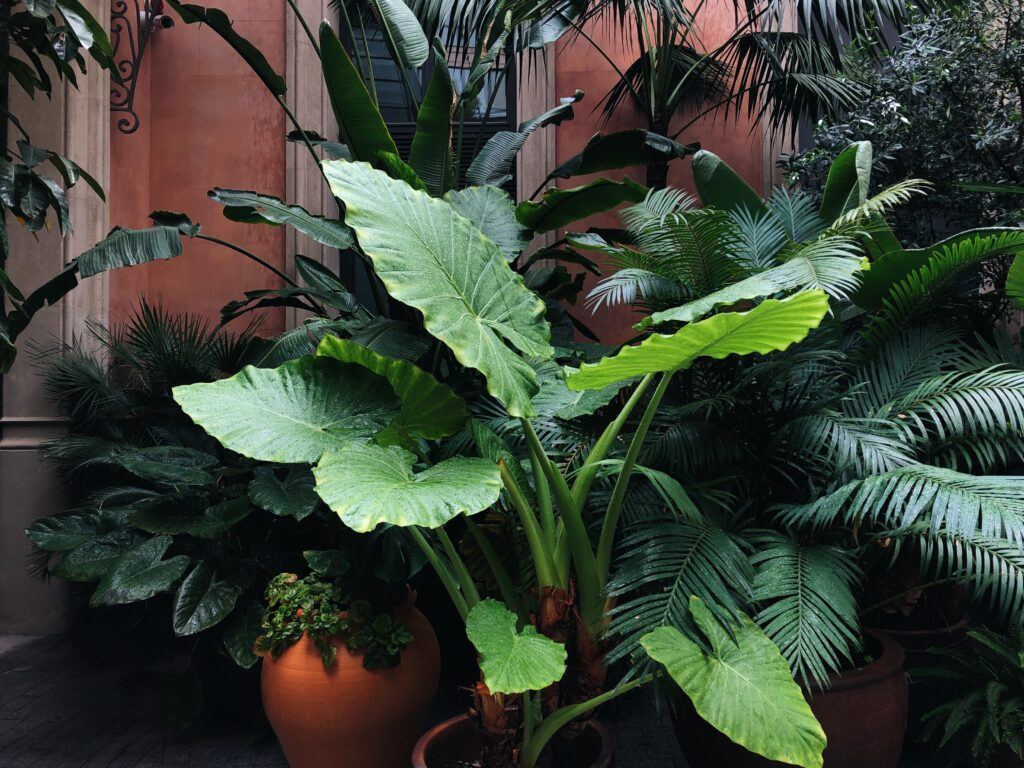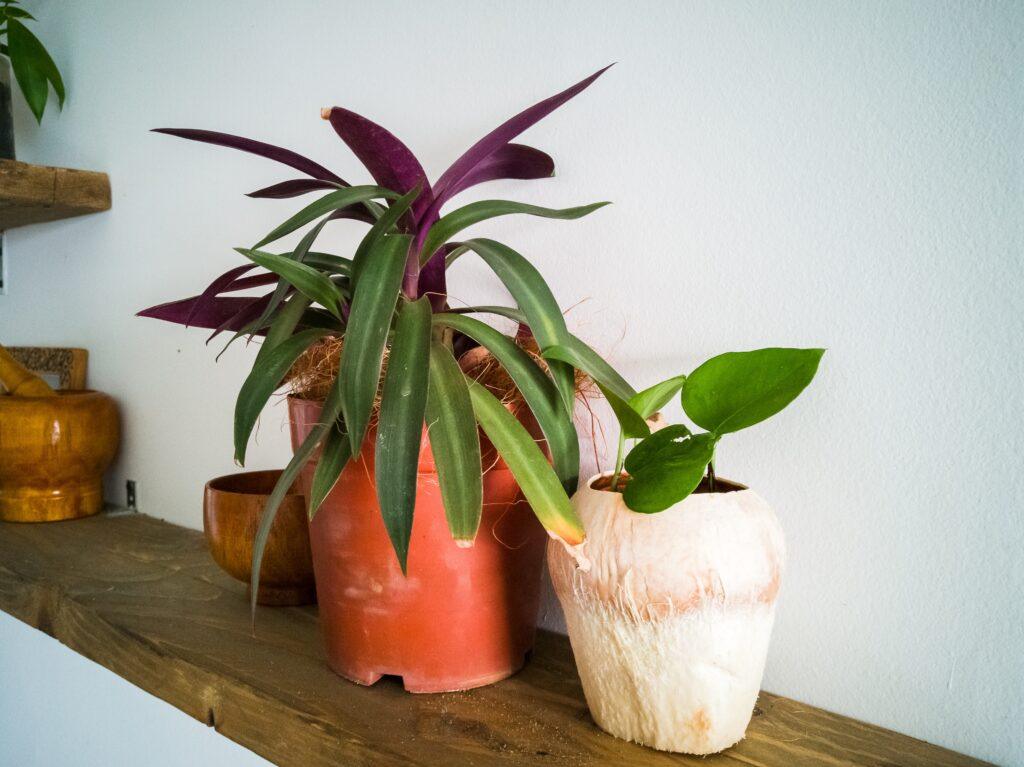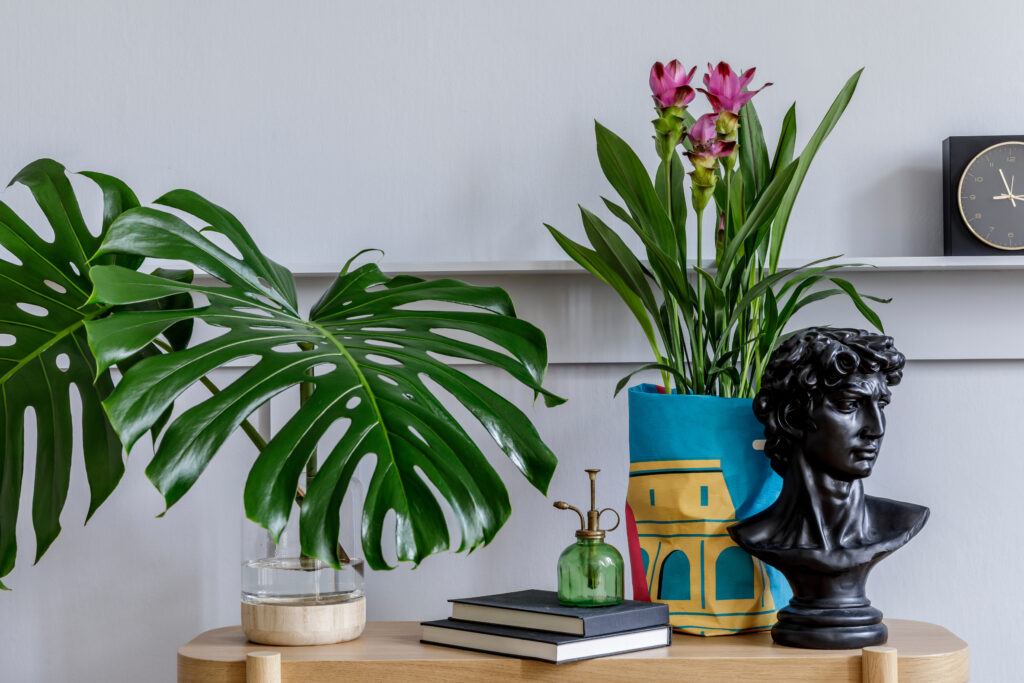
Tropical plants bring beauty, vibrancy, and color to our indoor spaces. They can connect us with nature, reduce stress, and give us a sense of accomplishment. Studies have shown that growing plants in our homes can reduce noise pollution and purify the air.
We can weave our living sculptures in the décor of our living rooms, bedrooms and kitchens. They enhance any room of the house and look great on our bathroom shelves and windows. There are endless varieties to choose such as pothos, snake plant, philodendron, ferns, and orchids, to name a few.
How to care for your indoor tropical plants:

All indoor plants need three things: good quality soil that is rich in nutrients, enough light, and the right amount of water. Different tropical plants have varying needs. Make it a point to learn the requirements of each plant. Knowing whether your plant prefers direct, indirect, or a mix of light is vital. Most tropicals flourish under bright, indirect light—when natural light is limited, indoor grow lights can help simulate the ideal conditions.
Humidity and temperature are important factors in tropical plant care. Since they’re used to a humid climate, consider keeping your room’s humidity level at around 60% if you can. This might mean misting your plant with a spray bottle 2 or 3 times a week or placing your plant in a naturally more humid spot like a bathroom with a window.
Watering is probably the most important part of caring for your tropical plant. Make sure you water according to your plant’s needs without over-watering. To do this, you must know how much your tropical plant needs to stay healthy and vibrant. Most tropical plants prefer their soil to dry out a bit between watering. Usually, once a week is a safe bet, but keep your eyes on the plant’s response. Yellow leaves often mean it’s getting too much water, while crisp edges suggest it’s too dry.
Proper watering and humidity go a long way—but even tropical houseplants can suffer from common pests. Our guide to common pests affecting tropical plants will help you spot trouble early.
During the growing seasons (spring and summer), feeding monthly with a balanced, water-soluble fertilizer made specifically for indoor plants gives them the extra boost they need. Feed only the recommended amount; over-fertilizing can burn your plants. Come the fall, scale back to let the plants rest.
Plant Care Tips:

Wiping your tropical plant’s leaves with a damp, micro-fiber cloth on both sides of the leaves and stems can prevent pests, keep them looking great, and help with photosynthesis. Light misting might refresh the leaves, especially during dry seasons, but be wary—too much moisture can encourage mold and fungi.
Most indoor plants should be repotted every year or two. If you can see roots growing through the drainage holes on the planter or if the soil is compacted, it is time to re-pot your tropical plant. Springtime is always a good time to re-pot plants that need extra room to grow. You should select a container that is only slightly larger than the current one. Use a high quality, loose potting mix that is suitable for your plant.
At the change of every season, you should evaluate your tropical plant’s condition to make sure it is getting everything it needs to thrive. Growing indoor tropical plants can be satisfying and rewarding; it isn’t hard, it just takes patience and learning to adjust to your individual plant’s needs. Caring for tropical plants is more than a hobby—it ties into modern trends in plant care, combining aesthetics, wellness, and mindfulness.
If you’re new to indoor gardening you might start with easy plants like spider plants, pothos and philodendron. You might be a novice now, but you’ll be an expert in no time!

Thanks for this. I don’t seem to be able to keep my indoor plants alive for more than a few months. Orchids seem to last the longest at just over a year, so I am no quite sure what I am doing wrong in most cases. It is a joy to have the plants indoors as it transforms the space so nicely, but keeping them healthy can be a nightmare.
I think I am probably overwatering in most cases, and perhaps not changing the soil often enough. I am also going to try wiping the leaves down as you suggest.
Thank you, Michel. How often do you repot your plants? Typically, you should need to repot every 18 to 24 months. Growing indoor plants is so rewarding, but can be a little daunting. It will really build your confidence to start with low maintenance plants like aloe vera, snake plant, and pothos. Later, you can add plants that take more care. Let me know if you have more questions.